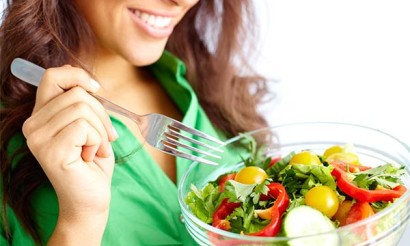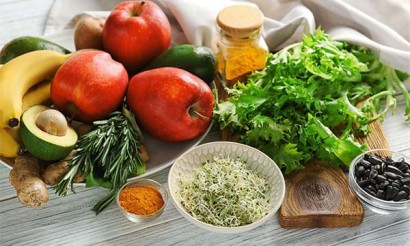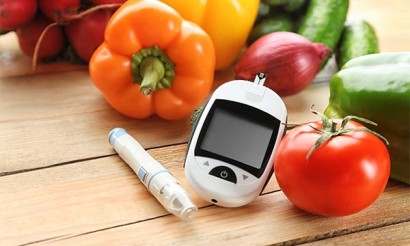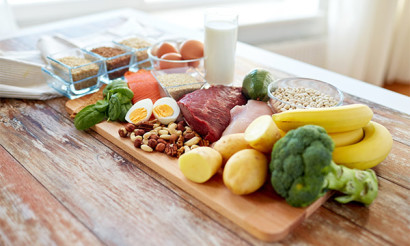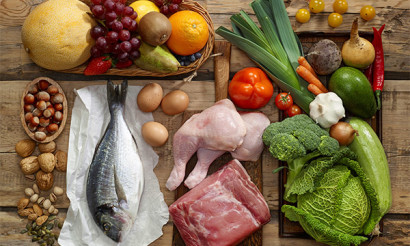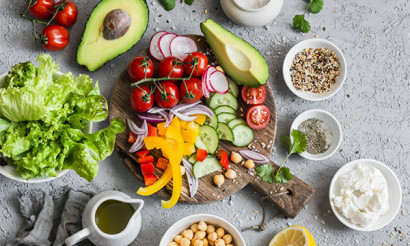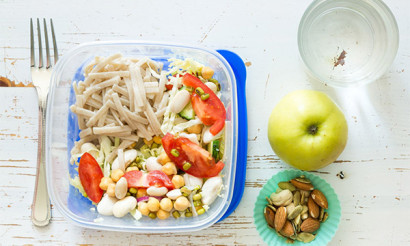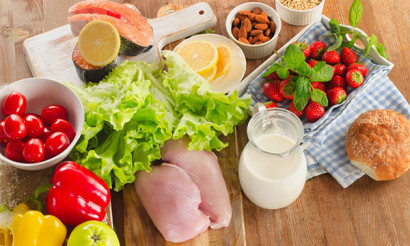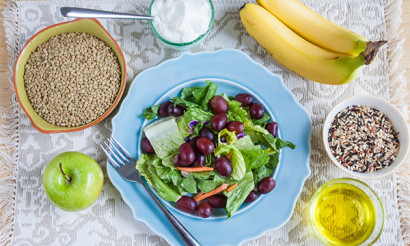Nutrition for cholelithiasis: what you can and can not eat?
A list of foods and drinks that can and can not be eaten with such a disease as cholecystitis.
- What you can and what you can't eat with cholecystitis
- Lentils
- Mushrooms
- Wheat porridge
- Barley porridge
- Corn porridge
- Couscous
- Bulgur
- Thistle oil
- Black cumin oil
- Pumpkin seed oil
- Coconut Oil
- Sea Buckthorn Oil
- Pine Oil
- Cream Oil
- Olive Oil
- Goat milk
- Ryazhenka
- Cottage cheese
- Condensed milk
- Milk
- Kefir
- Yogurt
- Chicken liver
- Cholodecake
- Lard
- Beef liver
- Pork
- Beef
- Sausages
- Dumplings
- Corn
- Beets
- Turnip
- Red Peppers
- Tomatoes
- Garlic
- Eggplants
- Peking cabbage
- Celery
- Pumpkin
- Cucumbers
- Zucchinis
- Sweet bell pepper
- Brussels sprouts
- Broccoli
- Potatoes
- Carrots
- Red cabbage
- Almonds
- Walnut
- Curcuma
- Honey
- Propolis
- Salmon
- Pink salmon
- Fish oil
- Sea kale
- Shrimps
- Crab Sticks
- Squid
- Red caviar
- Dill Seeds
- Pumpkin Seeds
- Sunflower Seeds
- Flax Seeds
- Sugar
- Oatmeal cookies
- Popcorn
- Marmalade
- Ice Cream
- Halva
- Marshmallows
- Lemon juice
- Tomato juice
- Sauce of cabbage
- Carrot juice
- Apple juice
- Fresh beet juice
- Pomegranate juice
- Cognac
- Coffee
- Kissel
- Kvas
- Beer
- Mineral water
- White wine
- Rosehip decoction
- Red wine
- Champagne
- Vodka
- Lemon tea
- White tea
- Chamomile tea
- Green tea
- Raisins
- Prunes
- Prunes
- Artichoke
- Mint
- Ginger root
- Parsley
- Dill
- Nettle
- Nectarine
- Apples
- Apricots
- Pomegranate
- Peaches
- Grapefruit
- Tangerines
- Pear
- Lemon
- Figs
- Pomelo
- Oranges
- Bananas
- Kiwi
- Mango
- Avocado
- Cherry
- Grapes
- Blueberries
- Silkberry
- Strawberry
- Blackcurrant
- Watermelon
- Buckthorn
- Rosehip
- Raspberry
- Raspberry
- Hawthorn
- Raw eggs
- Scrambled eggs
- Boiled eggs
- Quail eggs
- Cornflakes
- Sushi & Rolls
- Boiled Potatoes
- Baked Apples
- Sauerkraut
- Boiled corn
- Pasta
- Boiled beets
- Zucchini caviar
- Pickled Cucumbers
- Pea Soup
- Tomato paste
- Chicken broth
- Soy sauce
What you can and cannot eat with cholelithiasis
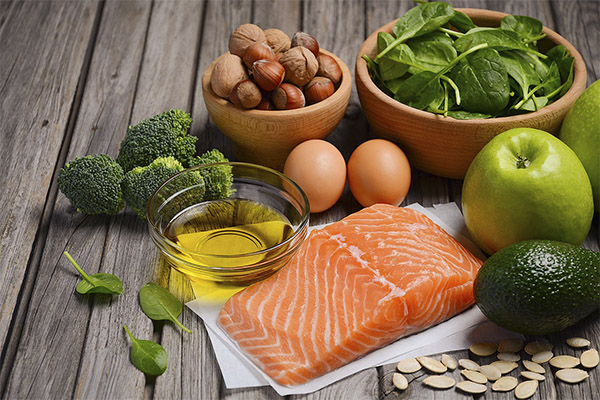
Lentils
When cholelithiasis occurs, it is necessary to exclude fatty foods from the diet, and lentils are the best way to do this. It is able to quickly saturate the body without a negative impact on the gallbladder. The only thing to remember is to stop eating it if there is gas formation.
Champignons
When cholecystitis it is forbidden to eat any type of mushrooms, including mushrooms. In addition, it is not allowed to consume broths based on mushrooms, because it can have a negative impact on the course of the disease, and in some cases provoke a relapse.
Wheat porridge
Wheat porridge is allowed and even recommended for people with cholecystitis, because the dish replenishes the body with vitamins and microelements, establishes metabolism and strengthens the immune system.
With cholelithiasis, it is necessary to prepare porridge liquid, slimy. You can start and end the day with a portion of wheat porridge. But it is necessary to eat it only warm, because with inflammation of the gallbladder, cold and hot dishes are prohibited. Naturally, it should be eaten without sauces, fries, spices.
Wheat porridge, as well as other food, can be eaten only during a period of remission. During the exacerbation of cholecystitis, the patient is shown starvation, and then only oatmeal.
Barley porridge
During the exacerbation of the disease, barley porridge is not recommended for patients with cholecystitis. But if it is boiled with a lot of water and then grinded into mush, you can take it in small quantities in the morning and evening. The diet in periods of remission should be observed: fatty, spicy - under the ban, all products - only in boiled or steamed form. Barley porridge in a thicker consistency will give a burst of strength and energy, but you should not abuse it, replacing it better with oatmeal.
Corn porridge
In the acute stage of cholecystitis, almost all cereals except oatmeal are prohibited. In the remission stage, the menu is expanded, but corn porridge is not recommended, because in disorders of this kind, this product is worse absorbed by the body.
Couscous
In this disease, couscous is allowed and even recommended as a side dish to vegetable and meat dishes.
Bulgur
For cholelithiasis, it is recommended to consume bulgur on a regular basis, but in small portions. The main thing is not to add spices and fat while cooking porridge. The most suitable option would be to cook soups.
Thistle oil
Cholecystitis is a disease of an inflammatory nature, and it is scientifically proven that milk thistle is able to reduce inflammation. Consequently, for patients with cholecystitis, the product is useful because it improves the formation of bile and its outflow, eliminates pain in the gallbladder, kills bacteria and microbes that are the cause of the disease. In addition, the product stimulates the breakdown of stones and prevents the formation of new ones.
Black cumin oil
If there are disorders in the functioning of the gallbladder, you will have to exclude such a product from the diet. Flax seed oil promotes the synthesis of bile. If there are stones in this organ, the use of vegetable oil can cause blockage of the ducts, and then the patient will have severe pain.
Pumpkin seed oil
Pumpkin seed oil is contraindicated in the acute form of the disease. Also it should not be taken if gallstones are formed in the gallbladder - this will only lead to a worsening of the situation. In the chronic form in steady remission, the oil can eliminate bile stagnation and improve metabolism. But you can use it only after consulting with your doctor and in small quantities.
Coconut oil
In acute cholecystitis, medics recommend refusing to use coconut oil. Introduce this product to the daily diet can be only after the onset of a stable remission. And about the frequency of use and authorized dosages can only say the attending physician.
Sea buckthorn oil
In cholecystitis, sea buckthorn oil relieves inflammation from the mucous membrane of the sick gallbladder. If the disease has had time to damage the tissues, the oil will accelerate their regeneration. But you can drink it only during periods of exacerbation of cholecystitis. Then it is strictly contraindicated, because it provokes the formation of gallstones in the gallbladder.
If there are disorders in the other organs of the digestive system, the oil should be postponed until the cure.
Cedar oil
Cedar oil is also excellent with all the manifestations of cholecystitis. Its regular use will accelerate the healing process and improve the overall condition of the patient suffering from this disease.
Butter
Butter can be consumed with cholecystitis, as it is easily digested and absorbed. In case it causes pain or bitterness in the mouth, it is recommended to add it little by little to different dishes as an ingredient.
Olive oil
In acute inflammation of the gallbladder, you should use olive oil only with the permission of your doctor. Otherwise there may be the most unforeseen consequences. It is best to use this useful product for preventive purposes to stimulate the outflow of bile and prevent the formation of stones.
As in the other cases described here, olive oil can be added to food and also taken by a tablespoon in the morning on an empty stomach. Both methods will help maintain gallbladder function at the proper level, and in the case of cholecystitis, they will eliminate the possibility of exacerbation of the disease.
Goat milk
The positive effects of milk can also be noted for cholecystitis. Milk, having a rich composition, helps to reduce the risk of gallstones in the gallbladder, relieves inflammation of the ducts. It helps to remove small crystals that can later form stones. Cholecystitis seriously lowers the body's immune response. The property of the product to strengthen the immune system will be very helpful.
Ryazhenka
In this disease, ryazhenka is almost the only permitted fermented dairy product, but only if the disease is in remission.
Cottage cheese
Patients with cholecystitis can include low-fat cottage cheese in their diet. After an exacerbation, the patient is allowed to eat low-fat cottage cheese. This dairy product is rich in lipotropics, which is very important in cholecystitis. During the exacerbation of the chronic disease, the patient is prescribed fasting.
Condensed milk
It is not recommended to consume condensed milk and with cholecystitis. Treatment of this disease is accompanied by compliance with a strict diet, which implies limiting the consumption of sugar and carbohydrates, which are contained in condensed milk in large quantities.
Milk
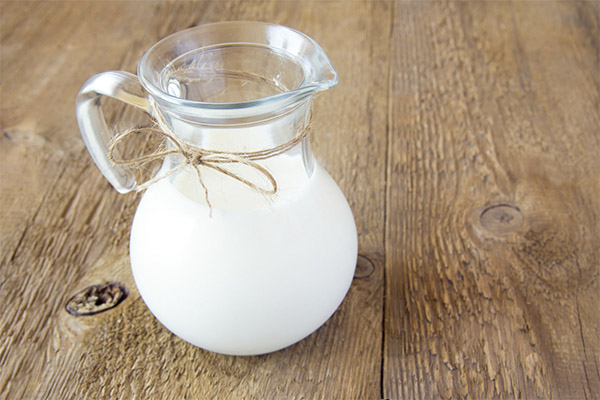
In this disease, low-fat milk can be consumed on its own and as part of approved dishes, but only in moderate quantities and provided that the pathology is not accompanied by the appearance of concrements.
Kefir
Cholecystitis is an inflammatory process in the gallbladder, which can be easily eliminated by consuming foods with a moderate acid-base balance. Kefir belongs to the most effective dietary products, so it relieves irritation and normalizes the overall condition of the liver and gallbladder.
Yogurt
When the disease is exacerbated, yogurt is the recommended product. The only thing you should pay attention to is the naturalness. It is better to choose a minimum fat content. It is recommended to eat it several times a day, combining it with fruit or dressing dishes with it.
Chicken liver
The diet for this disease involves the rejection of fried and fatty foods. If you want to enjoy a dish of chicken liver, it is better to eat it in boiled or stewed form. At the same time in the process of cooking the classic recipes should exclude oil.
Cholodets .
With inflammation of the gallbladder, it is also worth refusing from jellied meat. The reason for contraindications is still the same - the difficulty of digesting the product in cases where the organs can not function to their full potential.
Lard
Doctors forbid the use of lard in this disease. In addition, the use of the product in the disease of a sluggish form can provoke its exacerbation.
Beef liver
As is known, gallbladder inflammation appears due to improper nutrition. Therefore, when treating this disease, a rational diet is important. Eat at cholecystitis should be foods rich in vitamins, useful substances, dishes that are easily digested by the body, have a low caloric content and help to dilute bile. Beef liver meets these requirements. It can be included in the diet for this pathology, but the way this product is processed is very important. The best way to do this is to use liver cooked with steam or water, without adding spices.
Pork
Cholecystitis is a very dangerous liver disease in which the liver fails to cope with its direct function - removal of toxins from the body. Therefore, people with this disease particularly carefully need to monitor their diet and if possible eliminate from it all harmful products. As for pork, doctors strongly recommend not to people with cholecystitis to eat this product, because even dietary tenderloin can contain various harmful bacteria and microorganisms, which will adversely affect the general state of health.
Beef
Beef is not suitable for this disease. It would be much better to introduce veal with less fat into your diet.
Sausages
Gallbladder inflammation and pancreatic stones are a good reason to refuse sausages. An important reason for this is the "rich" composition of the semi-finished product, which negatively affects the activity of human processing organs.
Dumplings
Patients need a diet, and if so want dumplings, they should be homemade, from durum wheat with a large content of fiber. There should be no fat in the meat, and spicy seasonings are excluded.
Corn
Maize is useful not only in grains, but also in oils. They contain a large amount of important non-fatty acids, which have a beneficial effect on metabolic processes. This is very important in cholecystitis, so patients are recommended to regularly consume corn as a preventive measure.
Beets
In this disease, there is inflammation of the walls of the gallbladder, which leads to a violation of the outflow of bile, makes it difficult to digest fats, affecting the stool. In the first day of an acute attack is allowed only to drink warm water or weak tea, with croutons of white bread. After the symptoms of the exacerbation have subsided, restrictions are introduced into the diet: fatty foods, heavy meals, alcohol and products that have an irritating effect on the organs of the digestive system are forbidden. These products include raw beets, which affect the body quite intensely.
Boiled, baked beets and juice from them are part of the diet for cholecystitis, as they reduce the frequency of attacks, help to normalize metabolic processes in the body. To prevent exacerbations and help in the treatment, it is enough to consume about 100 g of beet products daily.
Turnips
People suffering from gallbladder pathologies, such as cholecystitis, use turnip is contraindicated in any course of the disease, because the root vegetable is rich in fiber and essential oils that irritate the mucosa and can provoke an attack, thereby bringing harm to the person.
Red pepper
Cholecystitis is an inflammation of the gallbladder, in which diet is also important for speedy recovery. The diagnosis itself is a strict ban on the consumption of red peppers and hot spices.
Tomatoes
If the inflammatory process has spread to the tissues of the gallbladder, tomatoes will help to cope with unpleasant symptoms. But they should be consumed in moderate quantities.
Included substances contribute to the normalization of bile production and metabolic processes. It is recommended to eat no more than 100 grams of tomatoes in fresh form per day.
Garlic
To improve the condition and speed up treatment, you need to strictly follow the prescribed diet. For this reason, raw garlic should be excluded from the diet, but sometimes heat-treated product is allowed.
Eggplant
Nutritionists prescribe to limit the consumption of eggplant in cholecystitis. Usually it is recommended up to 1-2 intakes per week, with a total of less than 500 g of eggplant.
The problem lies in the weak choleretic effect, which will lead to stagnation and the formation of more stones. The disease requires diagnosis, and already on the basis of this diagnosis, a diet is prescribed, corresponding to the specific condition of the gallbladder, the nature of the stagnation and the size of the stones.
Beijing cabbage
Patients with cholelithiasis should use Beijing cabbage very carefully and in small quantities. Abuse of the recommendations of specialists can lead to complications and exacerbation of symptoms of the disease.
Celery
Taking a decoction of celery accelerates the outflow of bile and helps to reduce inflammation. Prepare the drink can be at home, for this it is enough to pour 30 grams of the root of the plant with a glass of water and boil for 10 minutes. Allow to infuse until completely cooled. The decoction is recommended to use three times a day for 20 minutes before a meal.
Pumpkin
Pumpkin with cholelithiasis can be consumed. In this case, pumpkin seeds are considered the most useful. On their basis, special preparations for treatment are usually prepared. In natural form, you can eat up to half a cup of seeds per day.
Cucumbers

Patients suffering from cholecystitis are allowed to eat fresh cucumbers and their juice, as well as prepare salads, mixing them with other vegetables.
Zucchini
With this pathology, zucchini is even useful for its anti-inflammatory properties. In addition, it contains substances that help normalize salt metabolism, which prevents the further development of cholecystitis. The fact is that zucchini contain up to 95% water, which has the ability to remove excess salts (especially phosphorus).
Bell peppers
Rest is necessary to cure gallbladder inflammation. Sweet peppers cause excessive production of gastric juice and stimulate the release of bile, than strain the diseased organ. Therefore, sweet peppers are not recommended for use in acute cholecystitis.
Brussels sprouts
Cholecystitis is an inflammation of the gallbladder, which can develop both in the presence of stones and without them. When forming a diet, doctors recommend avoiding excessive consumption of foods rich in vitamin C, which includes Brussels sprouts. If a person is diagnosed with the presence of oxalates, this type of cabbage is better to exclude from the menu.
Broccoli
For cholecystitis, it is strictly forbidden to eat white cabbage and cauliflower, as they affect the metabolism of bile. However, an exception can be made for broccoli. In small quantities, this cabbage has a positive effect on the gastrointestinal tract and pancreas. But before including it in the diet, it is necessary to consult with your doctor.
Potatoes
Antispasmodic, enveloping and other healing properties of potatoes make it an indispensable product in the treatment of cholecystitis. Patients suffering from this disease note that regular consumption of the root vegetable reduces the symptoms characteristic of cholecystitis and improves the overall condition of the body.
Carrots
People who suffer from acute forms of those or other diseases need a prior consultation with a doctor to get individual recommendations on the use of the products of interest. With the disease in a chronic form, carrots are not contraindicated, but since the vegetable must be consumed with fats, this can cause difficulties with cholecystitis.
Cauliflower
In this disease, cauliflower can be used both as a food and as a treatment. It increases the outflow of bile, which is very important at certain stages of the disease. As a food, this vegetable can be used to make soups or simply boiled or baked in the oven.
When acute cholecystitis, it is not recommended to use cauliflower.
Almonds
Those who have been diagnosed with gallbladder pathology, as well as those who have suffered the acute phase of the disease, will have to exclude almonds from food for a time - for about 6 months. At the same time, nuts are an excellent substitute for fatty meat in the diet and help regulate blood cholesterol, which is useful for patients with this diagnosis. For detailed dietary instructions, it is necessary to ask the treating physician.
Walnuts
Cholecystitis is an inflammation of the walls of the gallbladder. Since all food consumed has an effect on this organ, it is necessary to follow a strict regimen both in the acute form and during remission. All choleretic products are strictly prohibited, but walnuts are allowed if at least 6 months have passed after the acute attack. You can consume it only in the ground state 1-2 kernels a day. This kind of walnut is useful for patients due to the fact that it has wound-healing properties, which is necessary for the regeneration of the mucosa of the bladder.
Curcuma
The universal spice is also useful for inflammation of the gallbladder, if it is used in moderate amounts and in strict accordance with the instructions. The powder relieves inflammation and increases the outflow of bile. These actions will not allow stagnation to develop and will prevent the formation of bile.
Honey
Honey removes harmful cholesterol and restores the liver, so when chronic or acute cholecystitis normalizes the flow of bile, which prevents complications in the gallbladder.
Propolis
As clinical practice shows, the active components of propolis promote rapid repair of the structure of damaged tissues. Treatment with preparations with bee glue in combination with a gentle diet will help to normalize the function of the bile-excretory ducts. With cholelithiasis you can take an alcoholic 10% infusion of propolis 20 drops dissolved in a glass of warm milk. Such a medication will relieve painful sensations, even with cholelithiasis. In the chronic form of cholecystitis, you should take for three weeks 40 drops of alcoholic extract diluted with water.
Salmon
When the walls of the gallbladder become inflamed and the outflow of bile is disturbed, cholecystitis occurs. In this disease, it is very important to follow a strict diet aimed at eliminating bile from the body. Fish, although it is a useful product for humans, but its some varieties are prohibited for patients with pancreatitis, and salmon is one of them. Therefore, the use of salmon in such a disease is prohibited in any form.
Pink salmon
The diet with cholecystitis can include fish. But it should not be eaten in salty or fried form. Smoked products should also be refused. Thanks to the included substances, pink salmon helps to slow the spread of the inflammatory process, improve the overall condition.
Fish oil
When the gallbladder is impaired, most fatty products are contraindicated. But this does not apply to the quality preparation of fish oil, which not only does not harm the gallbladder, but also promotes the separation of bile.
In order to overcome such a disease as cholecystitis, it is necessary, in addition to other medicines, to include in the intake of fish oil. However, it is important to monitor the quality of the drug consumed - the composition should not contain such harmful substances as sorbitol and glycerol. In this regard, it is better to give preference to the liquid form, since harmful substances are usually contained in the composition of the capsule shell.
Seaweed.
If this disease is not accompanied by the formation of stones, there is no reason to refuse seaweed. On the contrary, it will be very useful, because it will help to get rid of edema and remove toxins. Also, seaweed in this disease can partially replace the forbidden salt.
Shrimp
The diet for cholelithiasis does not prohibit the consumption of shrimp meat. The main thing is to control the amount of eaten seafood and do not eat salt, sauces, spices or alcohol together with it.
Experts note that during the exacerbation of the disease, patients will have to completely abandon the shrimp and many other products.
Crab sticks
During an exacerbation of cholelithiasis, preservatives and products with the addition of E-substances are completely prohibited, so crab sticks belong to the forbidden.
It is recommended to pay attention to the fact that crab sticks in the period of remission can be consumed after heat treatment, because this reduces the likelihood of inflammation of the gallbladder. But there are cases when the product is prohibited even in remission, so it is important not to neglect the advice of the attending doctor.
Squid
Cholecystitis involves certain dietary restrictions, but seafood is allowed to eat. Squids will not provoke choleretic action, thereby increasing the load on the inflamed bladder. They should be steamed, boiled or baked, but not crusted fried.
Red caviar
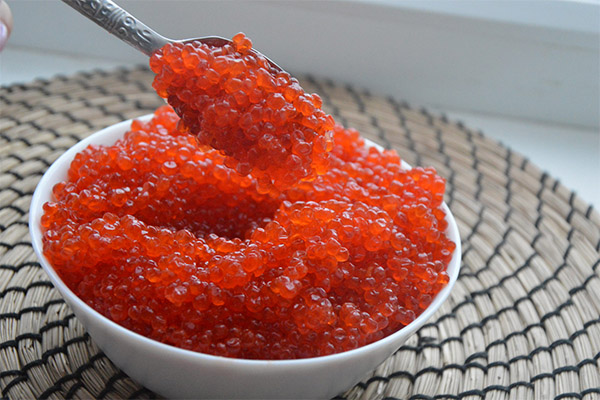
Red caviar contains not only many useful elements, but also a lot of salt. In addition, modern manufacturers add to this seafood a variety of preservatives that can harm the human body and provoke the development of many diseases. It is for these reasons, those people who suffer from cholecystitis, it is better to refuse to use red caviar, especially during exacerbation of the disease.
But whether it is possible to use this seafood during remission and in what quantities, can only consult the attending physician, who is familiar with the course of the disease, related diseases and body features.
Dill seeds
For the successful fight against the ailment, it is required to strictly follow a diet. In this case, dishes, in the preparation of which dill seeds were used, can relieve pain and improve the overall condition.
Pumpkin seeds
Preparations of pumpkin seeds can be used in the treatment of gallbladder disease, but only in remission. It is not recommended to use fried seeds or seeds with the addition of hot spices.
It is enough to use a tablespoon of ground germinated seeds in the morning, half an hour before a meal. Repeat this for no more than two weeks. If no discomfort appears, after a break you can repeat this course.
Sunflower seeds
The consumption of sunflower seeds in this diagnosis, according to former patients, helps in the treatment of inflammation of the gallbladder. The substances contained in sunflower seeds activate the outflow of bile from the biliary tract. But emphasis should be placed on raw seeds or slightly dried: the fried product, as well as other food cooked in this way, should be abandoned forever.
Flax seeds
In chronic cholecystitis, the same infusion is prescribed as in the treatment of diabetes mellitus. Flaxseed is contraindicated in acute cholecystitis.
Sugar
The most pleasant food for all bacteria is known to be sugars and their carbohydrates (remember microbiology - all nutrient media are prepared on the basis of carbohydrates). Therefore, in all bacterial diseases, it is worth reducing the consumption of sugars to a minimum, so as not to create a favorable environment for their development.
Oatmeal cookies.
With this disease, doctors recommend giving up oatmeal cookies for a number of reasons:
- Cookies have a high level of calories, and this has an extremely negative effect on the function of the stomach.
- The addition of various food additives, flavor enhancers, leavening agents can cause heaviness in the stomach and discomfort.
- Because of the fats present in the sweet, the dessert can cause processes such as flatulence or fermentation.
Popcorn
The diet for this disease involves a split diet, at least 5-6 times a day, which means you need to have small snacks. Natural popcorn is an excellent option for a nutritious snack, which you can take with you. The main condition remains unchanged - it must be prepared by yourself from quality grains, the origin of which guarantees the exclusion of any additives and treatments.
Marmalade
People with chronic cholecystitis are allowed to eat sweets and sweet dishes. In addition to chocolates and marshmallows, marmalade can also be included in the diet. At the same time, in order to avoid negative consequences, it is necessary to observe moderation in consumption. The recommended daily rate of sugar in cholecystitis is considered about 60 g. This is the total daily rate. If, in addition to marmalade, the patient consumes any other products containing sugar, they should also be taken into account. People in old age are allowed to eat up to 50 g of sugar per day.
Ice cream
People with cholecystitis will have to forget about the cold treat. The treatment of this ailment includes a complex of certain measures, which includes the observance of a strict diet. All cold or chilled foods are forbidden, and ice cream is among them. You can include ice cream in your diet only after undergoing postoperative rehabilitation. Before this, it is necessary to consult with your doctor.
Halva
When cholecystitis, when the mucous membrane of the stomach is disturbed, you should not use halva categorically. This is quite a heavy product, and even a small piece can cause aggravation of the pain
Marshmallow
It is allowed to include in the diet marshmallow in small quantities, but at the stage of exacerbation of such a dessert should be abandoned.
Lemon juice
Lemon juice is used for a mild cleansing of the body with cholecystitis. To treat the disease, it is necessary to follow a strict diet. It includes a variety of freshly squeezed freshes. It is recommended to use lemon juice diluted with warm water. Such a drink should be consumed no later than 20 minutes after preparation in order to preserve the maximum beneficial properties. Drink it through a straw to preserve tooth enamel. Consume half an hour before a meal. Such a drink is useful only at the stage of remission of the disease.
Tomato juice
During an exacerbation of cholecystitis, it is impossible to drink tomato-based juice. During the period of stable remission, it is possible to consume the drink. It contains a lot of pectin, it invigorates, gives a feeling of satiety and has a tonic effect. If you prepare the juice at home, add to it a small amount of olive oil, a little parsley, you will get a complete dish for those who must comply with the diet.
Tomato juice should be drunk warm, without adding salt and sugar. The consumption of cold food with cholecystitis can lead to spasm of the biliary tract and cause severe pain.
Cabbage juice
With such a disease as cholecystitis, the use of cabbage juice is allowed only when the disease passes into the stage of stable remission. During this period, the inclusion of the drink in the daily diet of the patient will help to restore the body after the disease, normalize the work of internal organs and significantly reduce the likelihood of relapses.
However, it is worth remembering and the fact that to include cabbage juice in the daily menu of people suffering from cholecystitis, it is possible only after consulting with the attending physician. Only a qualified specialist will be able to identify the presence of contraindications, assess all existing risks and the appropriateness of its consumption.
Carrot juice
Doctors allow you to drink this drink also during an exacerbation of cholecystitis. He will help to prevent the appearance of cholesterol plaques, remove accumulations of harmful cholesterol and excess bile, normalize secretion.
Apple juice
Juice from sweet apples is an obligatory component of the diet in the treatment of cholecystitis. It should be drunk slowly, preferably through a straw. It is necessary to use only freshly prepared juice and drink it no later than half an hour before a meal.
Freshly squeezed beet juice
In acute cholelithiasis, it is better to avoid drinking beet juice, because it provokes the appearance of additional inflammation, but at the remission stage, such a drink will be extremely useful. The outflow of bile is normalized, so the gallbladder begins to work smoothly, which supports the normal functioning of the liver.
Pomegranate juice
The diuretic properties of pomegranate juice have become the basis for restoring the normal functioning of the liver and gallbladder. An important quality is considered that the product contains antiseptic properties, which favorably affect the normal functioning of the organ in chronic cholecystitis. But it is important to remember that with inflammation, the disease runs in a particularly difficult stage, so you need to adhere to special dietary rules.
Cognac
The diet with gallbladder inflammation does not provide for the intake of alcohol. The only exceptions may be vodka and noble cognac. In small quantities, the refined drink will not be able to become a provocateur of the occurrence of gallstones. In addition, it is the cool alcohol that can cause an exacerbation of the disease, and cognac with its warm serving will not bring the risk of exacerbations. But before drinking it is necessary to consult with a specialist.
Coffee
As in the presence of pancreatitis, if cholecystitis develops, coffee can be drunk only with milk and in small quantities. The whole point is that the drink can have a negative impact on the intestinal mucosa and provoke the appearance of unpleasant symptoms.
Kissel
When such a diagnosis is detected, the observance of a strict diet is prescribed. Kissel refers to the products that can be used by patients in this category during the exacerbation period, when therapeutic fasting has already been cancelled, and in the remission phase.
This drink has a beneficial effect on digestion, restores intestinal microflora, removes irritation from the mucous membrane of the organ, which eventually improves the activity of the biliary tract.
Given the fact that kissel is able to remove toxins and harmful compounds from the body, as well as neutralize the acidic environment, we can conclude that it is practically indispensable for problems with the gallbladder.
Kvass
With all the useful properties of kvass, it has the ability to stimulate the release of gastric juice, so in cholecystitis it is on the list of products restricted to consumption.
Beer
Frequent consumption of beer drinks leads to stagnation of bile in the bladder and the appearance of stones in this organ. In addition, alcohol promotes narrowing of the bile ducts. Also, alcoholic products contribute to disruption of lipid metabolism, resulting in increased cholesterol levels in bile. And this accelerates the process of stone formation in it.
Mineral water
Cholecystitis is an illness in which there is inflammation of the walls of the gallbladder and bile stasis. Untimely treatment can cause cholelithiasis and end up in surgery. Irregular diet and bad habits are the main causes of the disease. First of all, you need to ensure frequent meals. Eat in small portions of at least 4 times a day. Before each meal, it is necessary to take 50-100 ml of mineral water. The medicinal drink promotes the removal of bile and reduces the development of inflammation.
In the presence of gallstones in the gallbladder, you should refrain from drinking drinks with high levels of mineralization. Biliary action can cause masses to move and cause a severe pain attack, which can not always be eliminated with painkillers.
White wine
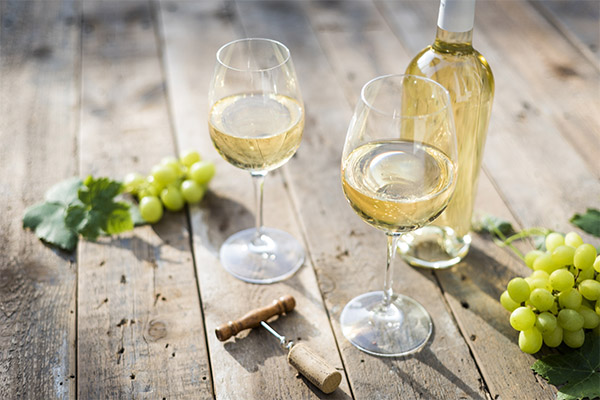
This disease is associated with a disorder of the digestive system. Alcohol can only aggravate the situation. Wine can disrupt the synthesis and outflow of the enzyme. There may be disorders of substance metabolism, which will make it difficult to excrete cholesterol and cause the formation of gallstones in the gallbladder. In addition, alcoholic beverages contribute to changes in the bile microflora.
Rosehip decoction
The benefits of rosehips are undeniable in inflammation of the gallbladder due to its incredible composition and healing properties.
Decoction of rosehips should be taken with cholecystitis for the following reasons:
- kills pain during the pain syndrome;
- Promotes regeneration of affected tissues;
- Reduces the inflammatory process;
- prevents the formation of stones.
Recipe for decoction: 20 g of dried berries pour 1 liter of water and boil over low heat for 15 minutes. Cooled at room temperature broth is ready for use. It takes three times a day, 100 ml.
Red wine
In this disease, it is necessary to reduce cholesterol levels and normalize the work of the hepatobiliary system (in particular the liver). An excellent remedy for this is dry red wine, but no more than one glass once every two days.
Champagne
If a person has choleretic disorders and a tendency to stone formation, the use of champagne should be refused. The drink can cause nausea, vomiting, painful attacks and digestive disorders.
Vodka
Consumption of vodka for gallbladder ailment is not recommended for a number of reasons:
- Alcohol promotes stagnation of bile, as a result of which it thickens and stones gradually begin to form in it, which contributes to the development of cholelithiasis.
- Alcoholic beverages cause the bile ducts to become narrower. This impairs the normal functioning of the biliary system.
- Alcohol increases the amount of cholesterol in the body, which also contributes to the formation of new stones.
- Harmful bacteria multiply, contributing to increased inflammation.
- Increases the likelihood of a pain attack, which can't always be eliminated at home.
Lemon tea
Lemon tea is not forbidden in this disease, it has a positive effect by activating the production of bile, which contributes to the removal of small stones from the body without surgery. In folk medicine, lemon and olive oil are used to treat this disease, but you should first consult with your doctor.
White tea
White tea normalizes the process of bile discharge. Its antibacterial qualities prevent the formation of inflammation in the bile ducts, the liver. A cup of tea will ease and relieve cramps. In the period of exacerbation, it is recommended to drink 600 ml of drink per day.
Chamomile tea
The use of chamomile tea as a remedy for cholecystitis is appropriate only if it is not accompanied by cholelithiasis. However, physicians recommend refraining from drinking this healing drink until the onset of a stable remission. After the acute period of the disease passes, chamomile tea will help the patient to restore the functions of the damaged organs, increase immunity, have a beneficial effect on the nervous system and can prevent the recurrence of the pathology.
Green tea
Green tea can be a preventive treatment for calculous cholelithiasis. Daily consumption of a tea drink will slow the formation of stones. The drink is prepared as follows: 20 grams of tea leaves pour boiling water and insist a few minutes.
Raisins
Raisins are allowed to use with cholelithiasis. In this case, it is recommended to make drinks on the basis of dried grapes, they are more useful in this case.
Prunes
The diet in the development of acute or exacerbation of chronic cholecystitis implies a complete rejection of many products. Among them are prunes.
Prunes
With cholelithiasis, dried apricots are allowed to eat, as they help to regulate the work of the intestines and normalize the processes associated with the outflow of bile. The exception is periods of exacerbation of cholecystitis during severe pain.
Artichoke
Artichoke helps patients with cholecystitis. Not only does it have choleretic properties, but it can also relieve nausea. According to reviews posted on the Internet, patients with regular consumption of the vegetable forget about discomfort and heaviness.
Mint
In case a person is found to have cholecystitis, peppermint will come to the rescue. To prepare a remedy on the basis of this plant, a tablespoon of raw materials should be pour a glass of steep boiling water and insist for half an hour. After this, the composition should be strained. The resulting infusion should be drunk in small sips throughout the day. A contraindication to the use of this composition is low blood pressure.
Ginger root
For all its usefulness and ability to relieve inflammation, ginger is contraindicated in cholecystitis. Its action in this disease is such that the irritation of the gallbladder mucosa only increases, and the disease can progress to a more acute form.
Parsley
The therapeutic diet for cholecystitis allows the use of parsley greens - but no more than 60 g per day. In addition, you can add root to vegetable soup - no more than 30 g, because otherwise there is a risk of formation of oxalate stones.
Dill
Although dill in cholelithiasis is recommended to exclude from the diet, some people do not follow this restriction and still add herbs (in small amounts) to their dishes. Specialists forbid to do this, so as not to put your health at risk unnecessarily.
Nettles
People who have long suffered from gallbladder ailments, this recipe will help. It is recommended to take a decoction made from the roots of the two-rooted plant. To prepare it, pour 2 tbsp. of crushed roots with a cup of steep boiling water, then boil the composition for a minute over low heat. Next, be sure to let the broth infuse for 1 hour. Ready folk remedy should be taken 3-4 times a day before meals and a quarter cup.
Nectarine .
Nectarines should be introduced into the diet only after consulting your doctor.
Apples
Sour apples should not be eaten with cholelithiasis. You should also be careful with fresh fruit, because it causes fermentation and increases flatulence. Doctors strongly recommend consuming apples baked or in the form of pureed compote. In this variant, they will not cause adverse effects, but will help to get rid of symptoms of cholecystitis and bile stasis, normalize the gastrointestinal tract and eliminate constipation. It is better if no more than 2-3 apples in baked form will be present in the daily diet.
Apricots .
In the diet with this disease can include apricots. They have a choleretic property. However, this only applies to fruit juice prepared with your own hands from ripe fruits. You can drink no more than 1 glass of squeeze at a time.
This allows you to normalize the outflow of bile, improve digestion. In addition, in this case, the painful sensations are reduced, there is no need to use a large number of medications.
Pomegranate
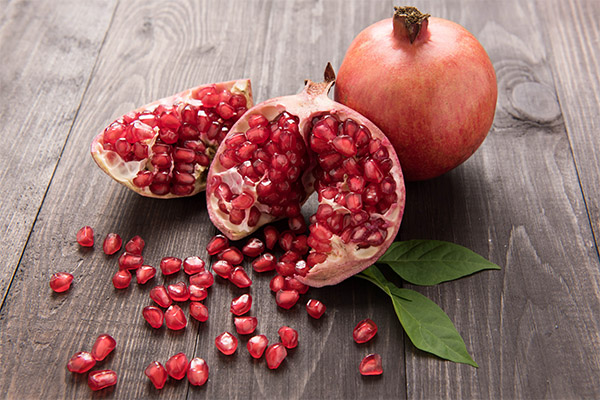
The pomegranate is slightly choleretic, so the pulp of the fruit may have a negative effect on the gallbladder, which is inflamed. The bile produced will stimulate the active production of enzymes.
When a person develops swelling and bile does not circulate properly in the body, stagnation is formed, which is the cause of cholecystitis. In this case, you can drink 50 ml of diluted fruit juice every day. The treatment continues until the symptoms of the disease disappear.
Peaches
When treating cholecystitis, diuretics and choleretic agents are used. In the diet for this pathology should be present peaches. But if the disease runs together with pancreatitis, you can not eat the fruit on an empty stomach.
Peach juice has a fast choleretic effect. Prepare such a drink can only be made from ripe fruit. Drink the juice can be no more than one glass at a time. In this case, the fruit must be ripe, without rottenness. They must first be thoroughly washed, you can even treat them with boiling water. In the process, you can not use sugar.
Grapefruit
In the treatment of this disease, grapefruit has no independent value, but it can be included in the diet to improve overall health.
Tangerines
With cholelithiasis, the consumption of citrus fruits should be completely abandoned. Otherwise, there is a risk of worsening the general condition and the development of the disease.
Pear
Diagnosis is obligatory. In general, the stimulating effect of the pear is small, but perhaps it is not enough for a sharp deterioration of the condition and immediate surgery. With a chronic and moderate course, pear is recommended in any form. It will help to get rid of heartburn and improve the overall condition.
Lemon
An accurate diagnosis of the condition of the gallbladder is necessary. Lemon juice is a moderate choleretic remedy. If, however, the gallbladder is blocked with stones, a severe complication of the condition up to and including death without immediate and very extensive surgery is not excluded.
In chronic cholecystitis with small stones you can use lemon juice therapy. Squeeze the juice of one fruit for 1 liter of water, drink every two hours. And in a day you need to drink 3 liters of lemon water. It is also good to use olive oil and lemon juice in the proportion 1 to 1, there add about a teaspoon of grated ginger and garlic. 100 ml should be drunk daily for a month.
Figs
When cholelithiasis, figs are allowed to use. Based on the fruit of the fig tree, you can even prepare remedies that help in the treatment of cholecystitis. For this you need to remove pips from lemons (0.5 kg) and figs (1.2 kg), and then, without removing the skin, grind both ingredients separately (for example, in a meat grinder). Mix lemons with figs, sugar (0.5 kg) and honey (7 tbsp.). Take 2-4 tbsp. before meals.
Pomelo
Pomelo, which is rich in vitamins, dietary fiber, macro- and micronutrients, is very suitable for the diet of patients with cholelithiasis. In addition, useful substances pomelo stimulate the secretion of bile and digestive glands, reducing cholesterol levels and eliminate constipation. And vitamin C prevents the thickening of bile, and therefore the formation of gallstones in the gallbladder.
Oranges
Patients suffering from this disease are contraindicated acidic foods, which include orange.
Bananas
Bananas are allowed if consumed in moderation.
Kiwi
Consumption of foods with a high content of acids, which include kiwi, with cholecystitis is not recommended because it can provoke an exacerbation of inflammation.
Mango
In cholecystitis, it is very important to follow a diet that should not include any acidic berries and fruits. For this reason, it is recommended to eliminate mangoes from your diet.
Avocado
In the acute course of the disease, it is better to refuse avocado, but 6 weeks after leaving the acute phase, you can introduce the product in the diet, but in small portions. Avocados will help to reduce acidity and relieve inflammation. But the main thing is not to overeat, since the product is quite fatty.
Cherries
The diagnosis of cholecystitis is a kind of restriction for the consumption of many products. But cherries and products from them are not one of them. Having a choleretic effect, although quite small, it helps to remove bile from the body, and also clears the sand. That is why doctors do not forbid the consumption of berries for patients suffering from cholecystitis, but during exacerbations it is not desirable to eat them. During remission, it is still better to process berries, i.e. to eat jam, compotes, marmalade, but there will be no danger in eating fresh fruit. The only thing to be wary of is abuse and increased acidity of the stomach. Therefore, it is advisable not to eat more than one handful of ripe fruit per day.
Grapes
Grapes, which are rich in organic acids, vitamins and minerals, have a positive effect on the treatment of cholelithiasis. It removes excess cholesterol, prevents clogging of blood vessels, and has choleretic and diuretic effects. Medics recommend including ripe fruits of the plant in your diet, but do not abuse them, because they cause fermentation, and this can lead to undesirable consequences and complications in cholecystitis.
Blueberries
The disease develops against the background of urolithiasis and is its complication. The pathology can be treated by means of folk medicine and preparations that include blueberries.
It will restore the normal functioning of the urinary system and relieve edema. Thus, blueberries are widely used in the treatment of many diseases and help significantly improve the overall condition of patients, accelerate healing processes.
Mulberry
Since cholelithiasis is a disease that has an inflammatory nature, mulberry can be used in its treatment. The berries and leaves of this plant have a strong anti-inflammatory effect, which will help to overcome cholecystitis, normalizing the physical and biochemical properties of bile.
Strawberries
Because strawberries increase the secretion of bile, they are among the foods allowed in cholecystitis. But for the same reason it should be used with caution and only after consultation with a doctor, if the pathology is accompanied by the formation of stones.
Black currant
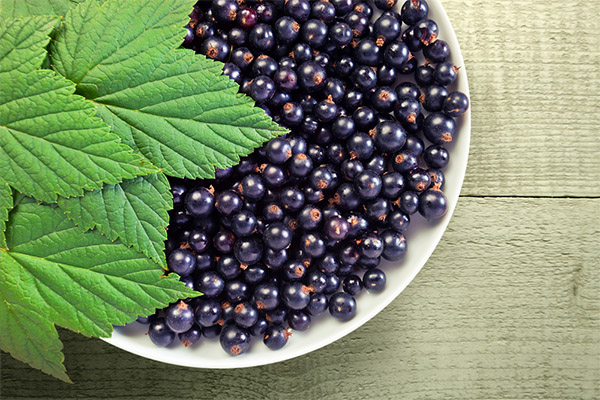
Black currants with gallbladder inflammation can reduce pain and reduce the growth of pathogenic microbes. Fresh fruits and drinks made from them can be used as an aid. Cholecystitis is a dangerous disease, which should be treated with the advice of the attending physician.
Since the berry has choleretic properties, its inclusion in the diet reduces the likelihood of the development of cholelithiasis.
Watermelon
During the exacerbation of cholecystitis, it is contraindicated to eat watermelon, because it can only aggravate the situation. This also applies when the disease is accompanied by the formation of stones in the bile duct. If cholecystitis is in remission and there are no concrements, then you can eat up to 250 grams of watermelon per day, but it is better not all at once, but in two meals. So you can even reduce the symptoms of inflammation.
Sea buckthorn
In this disease, sea buckthorn is contraindicated in any form, whether it is fresh berries, juice, tea or compotes.
Rosehip
Wild rose in cholecystitis is used as an antimicrobial and choleretic agent. Decoction of the berries is drunk to eliminate the signs of the disease. It helps:
- eliminate pain, as it has a wonderful antispasmodic effect;
- Accelerate the repair of damaged tissues and cells;
- Relieve inflammation and normalize metabolic processes;
- block anemia;
- Reduce cholesterol levels, strengthen blood vessels.
For a long time with cholecystitis, doctors do not recommend using decoctions: it can cause suppression of pancreatic activity.
Raspberry
Wild rosemary berries are widely used in the treatment of gastrointestinal diseases, especially cholecystitis. To do this, you need to mix the fruit with sugar and eat them fresh. You can also make a truly therapeutic decoction or kissel from cranberry. Such drinks have a good anti-inflammatory effect and can cleanse cells from toxic substances.
Raspberries
Medics do not forbid patients suffering from such a disease as cholecystitis to consume raspberries. However, they note that you should not eat them too much. Raspberries will bring great benefits to the human body and will help to cope with the disease only if the amount of its consumption is moderate.
Hawthorn
With cholelithiasis, experts advise to regularly take infusions of oriental hawthorn. This variety of plant will help to relieve the unpleasant symptoms of the disease and enhance the effect of medication.
Raw eggs
Gallbladder inflammation is divided into two large groups depending on the tone and motility of the biliary tract. If the motility is reduced, then raw eggs will be very helpful, because they help to reduce the muscles of the gallbladder, but those who have it too active, the use of this product is strictly prohibited.
Omelet
Cholecystitis requires the patient to eat foods that contain as little cholesterol as possible. Therefore, omelets should be eaten only protein omelets. Allowed to eat ½-1 yolk a day, which is a component of casseroles or cutlets.
Boiled eggs
With cholelithiasis (both acute and chronic), all products that can excessively strain the gastrointestinal tract are excluded from the diet. And eggs, as it is already known, increase the secretory function of the pancreas and contribute to a more active production of enzymes. Therefore, in cholelithiasis, they can be eaten not more than 3 times a week, and boiled only hard-boiled, preferably only one yolk.
Quail eggs
If at cholecystitis to eat quail eggs in raw form, you can get rid of belching and bitterness in the mouth, which accompany this disease. This low-calorie, but high in protein and other vitamins product is really useful for this disease.
Cornflakes.
Cholecystitis, especially in the acute form, requires a strict diet. If the question concerns the first days of exacerbation, here it is necessary to refuse to eat at all. On the other days it is necessary to develop your diet, including products from the list of allowed.
Features of the diet in cholecystitis:
- There should be about 5-6 meals per day.
- The portion for each meal should fill no more than 1/3 of the plate.
- The end of each meal should be accompanied by a slight feeling of hunger.
- The temperature of the food should not be too hot - room temperature or slightly warmer.
- Do not immediately wash down your food with tea or water, you should wait at least 40 minutes.
- The final meal should be finished at least 2 hours before going to bed.
Regarding the intake of corn flakes, any fast food is prohibited for cholelithiasis. Flakes, chips and other similar foods fall into the same category.
Sushi and rolls
Sushi and rolls can be eaten with cholelithiasis, but only in limited quantities and with great caution. Their rich composition allows you to strengthen the immune system, improve mental alertness and cope with inflammation.
But you should eat them only in moderation, without seasonings, additives and sauces. Also, they should not be part of the diet during an aggravation.
Boiled potatoes.
The inflammatory process, which affects the tissues of the gallbladder, can also be stopped with a comprehensive approach to treatment. Patients are prescribed medications and a diet.
The diet should include foods that help relieve inflammation and improve well-being. One such food is potatoes in boiled form. At the same time, it is forbidden to use a product fried in oil.
Baked apples
Not all fruits and vegetables can be included in the menu of a patient with cholelithiasis. However, baked apples do not fall into the list of foods that are banned. Little by little, peeling from the skin, you can eat fruits baked with sugar, honey or without additives. During the remission period of the disease, you can prepare baked apples with cottage cheese and sour cream, and eat them together with the peel.
Sauerkraut.
In the acute course of the disease, the diet should be sparing, so as not to traumatize the digestive organs. Only after the inflammatory process has subsided can cabbage be eaten in a fermented form. But it is recommended to use it only after rinsing with boiled water and after heat treatment. It is believed that the brine is beneficial, but it is better to consult a specialist before using it.
Boiled corn
It is believed that corn is useful for cholelithiasis. And even in those cases where it is accompanied by the formation of stones. But we are talking only about young corn cobs. They are boiled and eaten, but the decoction is not thrown away, but drunk a glass a day.
Pasta

In this disease, whole grain pasta is allowed in the diet. It is better to exclude other types of products from the menu.
Boiled beets
When the gallbladder is inflamed, namely in the chronic form of cholecystitis, beets give an anti-inflammatory effect, thanks to which you can stop the painful sensations, improving the overall condition of the body. But in the acute stage, the product can provoke the appearance of additional complications against the background of a general deterioration of the condition, so it is recommended to initially consult with your treating doctor.
Zucchini caviar
For cholelithiasis, zucchini, carrots and tomatoes are allowed to eat. Zucchini relieves bile stagnation and reduces the burden on the liver. Even in the absence of gallbladder, these products will not harm the body, but in order not to overload it, all the components of the caviar should be stewed, not fried. This approach will also preserve in zucchini the highest number of micro- and macronutrients, as well as antioxidants that help in the fight against aging.
Salty Cucumbers.
The diet for the disease excludes products that cause fermentation and irritation of the gastrointestinal tract. Forbidden spices, horseradish, acids, in general, almost everything that is contained in pickles. Sodium, which is rich in pickles, leads to moisture retention in the body and bile stasis.
Pea Soup.
Fermentation caused by legume-based foods is bad for anyone who has experienced this gallbladder disorder.
Tomato paste
Cholecystitis is an inflammation of the gallbladder. In this disease, a therapeutic diet is indicated, which is prescribed by a doctor taking into account the condition of the patient. Tomato paste is contraindicated. Specialists recommend consuming tomatoes fresh or adding them to salads with other vegetables. It is worth noting that tomatoes have a choleretic effect, so you should not consume them in the presence of gallstones in the gallbladder.
Chicken broth
This dish should not be consumed with such a disease as cholecystitis. Like any other meat broth, chicken broth contains extractive substances that stimulate secretion. As a consequence, an exacerbation of cholecystitis may develop. But even in the chronic course of the disease, you can use only lean meat, which was cooked in a second broth.
Soy sauce.
In this disease, you need to reduce the use of salt and spices. They may well be replaced by a quality sauce, which will consist only of the four ingredients listed above. But soy sauce with spicy additives should be abandoned.
«Important: All information on this site is provided for informational purposes only purposes only. Check with your health care professional before using any of the recommendations. should be consulted with a health care professional before they make use of any of the recommendations. Neither the editors nor the authors shall be liable for any possible harm caused by materials."

